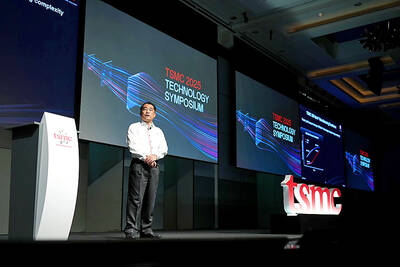Leaders of Pakistan’s ruling coalition met yesterday to discuss who should succeed former president Pervez Musharraf, while a bombing outside a hospital and clashes with militants killed dozens and underscored the challenges facing the country.
Musharraf resigned on Monday in the face of impeachment threats from the government, which is packed with his foes. He was believed to be in his tightly guarded residence on the outskirts of Islamabad. His future was on the agenda for the meeting.
How the coalition deals with succession — and whether it leads to a power struggle — is a looming question at a critical time. The militant threat is spreading in the northwest, but the country also faces soaring inflation, chronic power shortages and a host of other economic problems.
Law Minister Farooq Naek said yesterday that the government had not struck an immunity deal with Musharraf, though supporters and foes suggested he had sought guarantees that he would not face criminal prosecution or be forced into exile.
“There is no deal with the president, and he had himself resigned,” Naek told reporters.
Musharraf did not specify his plans during his emotional resignation speech on Monday, saying only that his future was in the hands of the people. But local media reports have suggested he might leave the country for security reasons.
Pakistan’s president is elected by lawmakers, a process that is supposed to be completed within 30 days.
Meanwhile, police said yesterday that security forces backed by helicopter gunships and artillery pounded targeted insurgents in the the Bajur tribal region, killing 11 suspected militants and five civilians over a 24-hour period.
Separately, government official Jamil Khan said 13 militants and five paramilitary troops died yesterday in a clash at a fort in the Nawagai area of Bajur.
Another 23 people were killed and 15 wounded in violence that officials said appeared to be sectarian — a bombing outside the emergency gate of a hospital crowded with Shiite Muslim mourners.

DEMOGRAPHICS: Robotics is the most promising answer to looming labor woes, the long-term care system and national contingency response, an official said Taiwan is to launch a five-year plan to boost the robotics industry in a bid to address labor shortages stemming from a declining and aging population, the Executive Yuan said yesterday. The government approved the initiative, dubbed the Smart Robotics Industry Promotion Plan, via executive order, senior officials told a post-Cabinet meeting news conference in Taipei. Taiwan’s population decline would strain the economy and the nation’s ability to care for vulnerable and elderly people, said Peter Hong (洪樂文), who heads the National Science and Technology Council’s (NSTC) Department of Engineering and Technologies. Projections show that the proportion of Taiwanese 65 or older would

Nvidia Corp yesterday unveiled its new high-speed interconnect technology, NVLink Fusion, with Taiwanese application-specific IC (ASIC) designers Alchip Technologies Ltd (世芯) and MediaTek Inc (聯發科) among the first to adopt the technology to help build semi-custom artificial intelligence (AI) infrastructure for hyperscalers. Nvidia has opened its technology to outside users, as hyperscalers and cloud service providers are building their own cost-effective AI chips, or accelerators, used in AI servers by leveraging ASIC firms’ designing capabilities to reduce their dependence on Nvidia. Previously, NVLink technology was only available for Nvidia’s own AI platform. “NVLink Fusion opens Nvidia’s AI platform and rich ecosystem for

Taiwan Semiconductor Manufacturing Co (TSMC, 台積電) yesterday said it is building nine new advanced wafer manufacturing and packaging factories this year, accelerating its expansion amid strong demand for high-performance computing (HPC) and artificial intelligence (AI) applications. The chipmaker built on average five factories per year from 2021 to last year and three from 2017 to 2020, TSMC vice president of advanced technology and mask engineering T.S. Chang (張宗生) said at the company’s annual technology symposium in Hsinchu City. “We are quickening our pace even faster in 2025. We plan to build nine new factories, including eight wafer fabrication plants and one advanced

‘WORLD’S LOSS’: Taiwan’s exclusion robs the world of the benefits it could get from one of the foremost practitioners of disease prevention and public health, Minister Chiu said Taiwan should be allowed to join the World Health Assembly (WHA) as an irreplaceable contributor to global health and disease prevention efforts, Minister of Foreign Affairs Lin Chia-lung (林佳龍) said yesterday. He made the comment at a news conference in Taipei, hours before a Taiwanese delegation was to depart for Geneva, Switzerland, seeking to meet with foreign representatives for a bilateral meeting on the sidelines of the WHA, the WHO’s annual decisionmaking meeting, which would be held from Monday next week to May 27. As of yesterday, Taiwan had yet to receive an invitation. Taiwan has much to offer to the international community’s